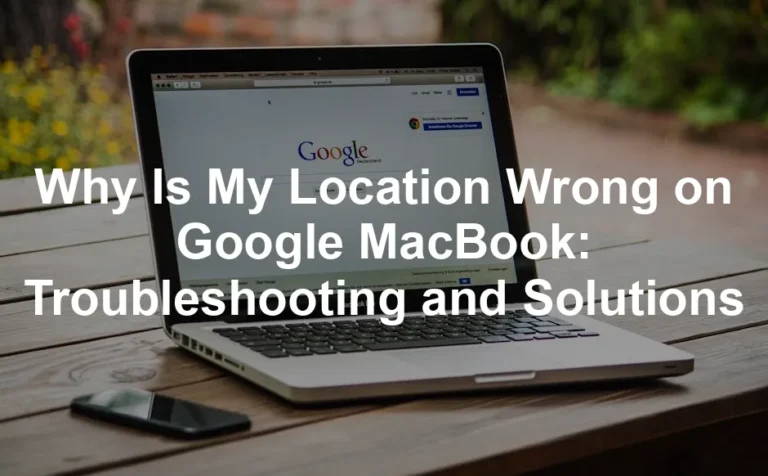
Why is Multiplexing Important in 5G
Introduction
Multiplexing allows multiple signals to share the same communication channel. It’s crucial for telecommunications, especially with the rise of 5G technology. As we demand faster, more reliable data, multiplexing plays a vital role in overcoming network challenges.
And speaking of reliable data, if you’re looking to supercharge your home internet experience, consider the 5G Home Internet Router. With lightning-fast speeds, you can stream, game, and browse without a hitch!
Summary and Overview
Multiplexing is the technique of combining multiple data streams over a single communications medium. In 5G, several multiplexing methods are utilized, including Frequency Division Multiplexing (FDM), Time Division Multiplexing (TDM), and Multiple Input Multiple Output (MIMO). These techniques cater to the increasing needs of modern applications like the Internet of Things (IoT), augmented reality (AR), and streaming services. By using multiplexing, 5G can significantly enhance data rates and improve overall network efficiency, ensuring a smoother experience for users.
While we’re on the topic of modern applications, if you’re into smart homes, consider investing in an IoT Smart Home Hub. It consolidates all your devices, making your life easier and your home smarter!

The Importance of Multiplexing in 5G
Understanding Multiplexing in Telecommunications
Multiplexing is a technique that combines multiple signals over a single channel. It revolutionized telecommunications, enabling more efficient use of bandwidth. Historically, this method emerged in the late 19th century for telegraphy. As technology advanced, so did multiplexing methods.
In the early days, frequency division multiplexing (FDM) was popular. This allowed separate signals to occupy distinct frequency bands. Fast forward to today, and we see time division multiplexing (TDM) and code division multiplexing (CDM) in action. These innovations help support the demands of modern communication systems, especially with the rise of mobile devices.
5G networks rely heavily on multiplexing. With the explosion of data and connected devices, efficient signal management becomes critical. Multiplexing techniques help in maximizing capacity and improving data rates, addressing the needs of diverse applications like IoT and streaming services.

Types of Multiplexing Techniques in 5G
Frequency Division Multiplexing (FDM)
FDM splits the total bandwidth into smaller, non-overlapping channels. Each channel carries a separate signal, which is particularly useful in 5G networks. This method allows multiple users to transmit simultaneously without interference.
The main advantages of FDM include its ability to support high data rates and facilitate numerous simultaneous connections. However, it also has limitations, such as potential spectral inefficiency, especially at low traffic levels.
To enhance your streaming experience, consider a 4K Ultra HD Streaming Device. Enjoy your favorite shows in stunning clarity while multiplexing does its magic behind the scenes!

Time Division Multiplexing (TDM)
TDM allocates time slots to each user on a shared channel. This means that only one user’s data is transmitted within a given time frame. In 5G, TDM is vital for ensuring efficient data transmission.
TDM is particularly beneficial in scenarios with bursty data traffic, such as video calls or online gaming. By allowing multiple users to share the same bandwidth, TDM enhances overall network efficiency while maintaining low latency.
Code Division Multiple Access (CDMA)
Code Division Multiple Access (CDMA) is a key technology in 5G networks. It allows multiple users to share the same frequency band. Each user is assigned a unique code, enabling simultaneous transmission. This method increases the overall capacity of the network significantly. As a result, more users can connect without causing interference. With CDMA, 5G networks can support a higher number of devices. This is crucial as the demand for mobile data continues to grow.

Spatial Multiplexing and MIMO
Spatial multiplexing is a game changer in 5G technology. It utilizes Multiple Input Multiple Output (MIMO) systems to boost performance. MIMO employs multiple antennas at both the transmitter and receiver ends. This setup allows for the transmission of multiple data streams simultaneously. By doing so, it enhances data throughput and overall capacity.
The use of MIMO also improves signal quality. It does this by exploiting the rich scattering environments in urban areas. When signals bounce off buildings and other obstacles, MIMO can separate them effectively. Thus, you get more reliable connections, even in crowded spaces. This technology is essential for applications like streaming, gaming, and virtual reality, where high data rates are necessary.

To take your gaming to the next level, don’t forget about a Gaming Mouse with High DPI. Precision and speed can make all the difference in your gaming experience!
The Role of Multiplexing in 5G Applications
Enhanced Mobile Broadband (eMBB) benefits greatly from multiplexing techniques. Multiplexing ensures that high data rates are available for users. This capability supports applications like ultra-high-definition video streaming. Imagine watching a 4K movie without buffering—it’s all thanks to multiplexing.

Furthermore, gaming applications with real-time feedback rely on these high speeds. Multiplexing allows numerous users to enjoy seamless experiences simultaneously. As the demand for bandwidth continues to rise, multiplexing remains a cornerstone of 5G success.
And to keep your gaming setup looking sharp, consider upgrading your entertainment space with a Home Theater System. Immerse yourself in the action like never before!
Ultra-Reliable Low Latency Communication (URLC)
Multiplexing is crucial for achieving low latency in 5G networks. It enables multiple data streams to be transmitted simultaneously, minimizing delays. This is essential for applications requiring real-time responses, like autonomous vehicles. Imagine a self-driving car processing vast amounts of data from sensors while navigating traffic. Any delay could lead to dangerous situations. Multiplexing ensures that these vehicles receive and transmit information almost instantly, enhancing safety and reliability.

Massive Machine Type Communication (mMTC)
In the realm of IoT, multiplexing allows numerous devices to connect without overwhelming the network. It manages connections for everything from smart home gadgets to industrial sensors. By efficiently allocating resources, multiplexing ensures that each device gets the necessary bandwidth. This scalability is vital as the number of connected devices continues to rise. As more machines communicate, effective resource utilization becomes essential to maintain network performance and reliability.

Challenges and Future Directions
Current multiplexing techniques face several challenges in 5G implementation. Issues like interference, limited bandwidth, and increased demand can hinder performance. To address these, advancements in technology are needed, such as improved algorithms and enhanced hardware. Future developments may also explore new multiplexing methods that can better handle the growing complexity of data traffic. Embracing innovation will be key to overcoming these limitations and optimizing 5G networks.

Future of Multiplexing in 6G and Beyond
The evolution of multiplexing technologies is on the horizon. As we shift towards 6G, we can expect significant advancements. Future multiplexing may integrate artificial intelligence to optimize data transmission. Imagine systems that learn user patterns for faster, more efficient connections.
Moreover, emerging techniques like spatial and wavelength division multiplexing will play crucial roles. These methods will enhance current capabilities, allowing even more simultaneous connections. With increased demand for data, improved multiplexing will be essential for accommodating diverse applications. The future looks bright for multiplexing, promising better connectivity and performance.

Conclusion
Multiplexing is vital for boosting 5G network performance. It enables efficient data transmission, meeting the growing demands of modern applications. Without multiplexing, high-speed connectivity would struggle to keep up.
If you’re looking for a reliable way to stay connected, consider investing in a Wi-Fi Range Extender. It can help eliminate dead zones in your home, ensuring you have access to high-speed internet wherever you are!
As we embrace future communication technologies, exploring multiplexing further will be crucial. Its continued development will shape the next generations of mobile communication, ensuring we stay connected in an increasingly digital world. Dive deeper into multiplexing technologies to understand their potential in transforming our communication landscape.
Understanding why multiplexing is important in 5G can provide insights into the future of telecommunications. why is multiplexing important in 5g
FAQs
What is multiplexing in telecommunications?
Multiplexing, or muxing, allows multiple signals to share a single communication channel. It combines various data streams into one composite signal for efficient transmission. Upon arrival, demultiplexing separates these signals for processing. This technique is essential for effective resource utilization in networks.
How does multiplexing improve data rates in 5G?
Multiplexing enhances data rates by allowing multiple connections over the same channel. Techniques like MIMO and OFDM maximize bandwidth efficiency. This means more users can transmit data simultaneously, resulting in higher overall throughput for the network.
What types of multiplexing are used in 5G?
In 5G, several multiplexing types are prevalent: – Frequency Division Multiplexing (FDM): Divides bandwidth into sub-channels for separate signals. – Time Division Multiplexing (TDM): Allocates time slots for each user on a shared channel. – Code Division Multiple Access (CDMA): Assigns unique codes to users, allowing simultaneous transmissions. Each method supports various applications and enhances data efficiency.
Why is MIMO important for 5G?
MIMO (Multiple Input Multiple Output) is crucial for 5G because it uses multiple antennas for simultaneous data streams. This increases network capacity and improves signal quality. MIMO technology supports high data rates, making it ideal for applications like streaming and gaming.
What challenges does multiplexing face in 5G?
Multiplexing faces challenges such as interference, limited bandwidth, and increased device connections. These issues can lead to reduced performance. Solutions may include advanced algorithms and hardware upgrades to optimize multiplexing capabilities in real-time.
Please let us know what you think about our content by leaving a comment down below!
Thank you for reading till here 🙂
All images from Pexels




